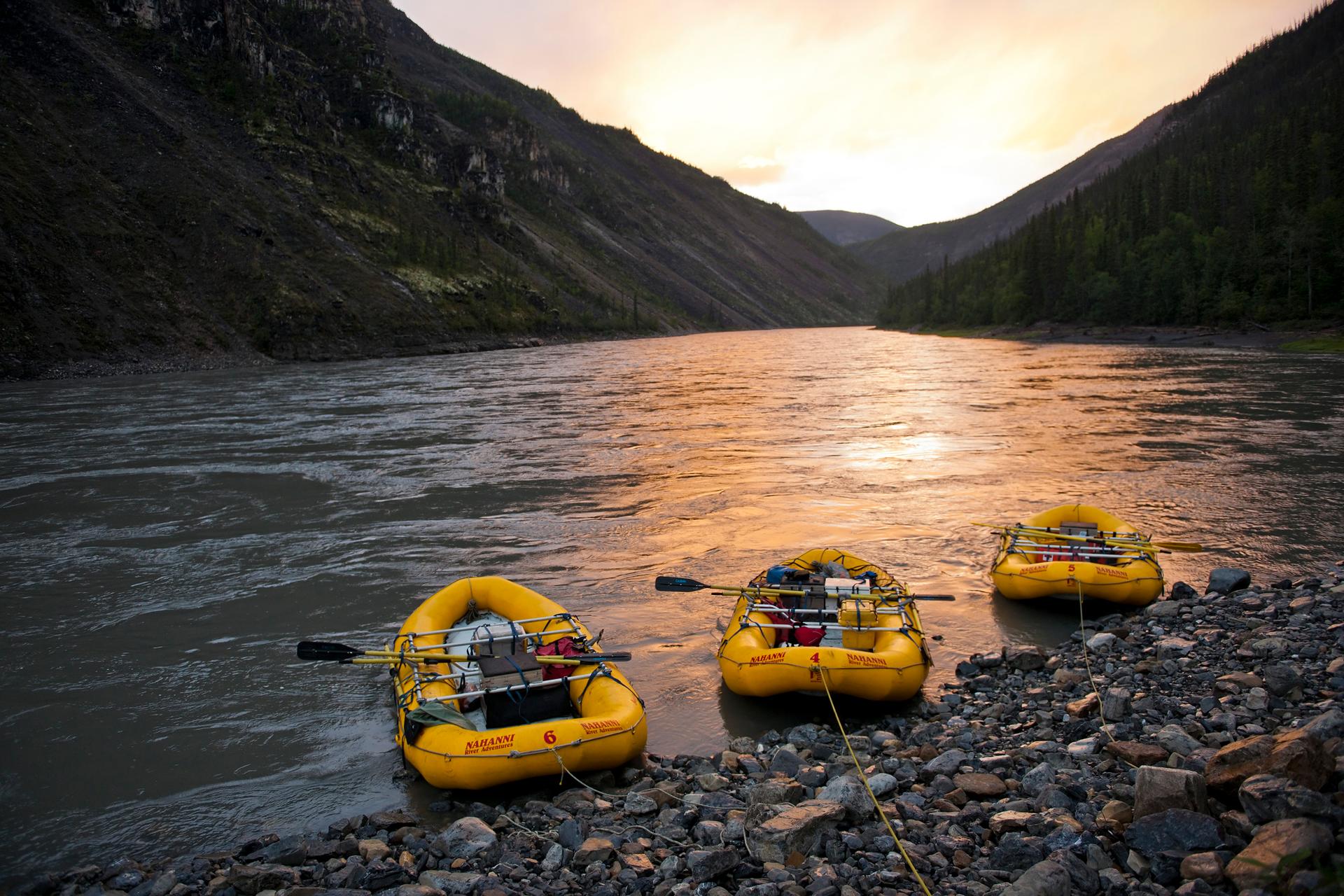The Northwest Territories: where each paddling trip is a pilgrimage

This post originally appeared on the Spectacular Northwest Territories website.
The Northwest Territories is synonymous with wild rivers. Listen to the names: The Nahanni. The Thelon. The Mountain. The Mackenzie. If you're a wilderness canoe-tripper, these are rivers that set you to dreaming. Welcome to the home of the most renowned paddling journeys on the planet. Start packing your dry-bags. Your dream launches here.
Horton River
From its headwaters at Horton Lake, not far from Great Bear, this river cuts 600 kilometres through stunted spruce forest and Barrenland tundra to Franklin Bay, on the Arctic coast near Paulatuk. En route it passes through the eerie Smoking Hills and challenging limestone canyons. Canoeists can enjoy guided trips on the Upper Horton, the more challenging Lower Horton, or both. Access is by charter from Inuvik.
Keele River

The Keele River offers a Canadian Tourism Commission Signature Experience, an alpine river suitable for all levels of canoeists. It flows 360 kilometres from the mouth of the Natla River, winding through past the mountains, hotsprings and wildlife of N??ts'ihch'oh National Park Reserve, finally pouring into the Mackenzie south of Tulita. Guided trips are offered on the Keele with access by air from Norman Wells.
Mackenzie River
Canada's longest river, reaching 1,738 kilometres, the Mackenzie drains one-fifth of Canada but retains the mystique of a remote frontier waterway. Often called Deh Cho (big river), it was for centuries the North's superhighway, linking the many peoples who fished, hunted, and trapped along its banks. Today, paddling the Mackenzie is still the best way to experience the heart of the Northwest Territories. You'll not only have a chance to visit the dozen or so traditional communities that flank it (from Fort Providence at the headwaters to Tuktoyaktuk near the mouth), but also see mountains, hotsprings, and the awesome Ramparts - limestone cliffs that pinch the river near Fort Good Hope.
Slave River
The Mackenzie's biggest tributary flows lazily through Wood Buffalo National Park - then explodes into the Slave River Rapids, a tumult of waterfalls, whirlpools, and house-high waves. The nearby town of Fort Smith was founded as the put-in after the long portage around the rapids; nowadays, world-class kayakers use this maelstrom as their playground. Below Fort Smith, the river travels another 290 placid, forest-shrouded kilometres to Fort Resolution on Great Slave Lake.
South Nahanni River

At least once in your life, see the Nahanni - a liquid jewel, surging through an empire of peaks. Take a floatplane tour, complete with a walk at Virginia Falls, perhaps the Earth's most cataclysmic wilderness waterfall. Better yet, travel the Nahanni by canoe, visiting features (like the Tufa Mounds, the Rock Gardens, and Kraus Hotspring) that are almost as famous as the river itself. Access is by air from Fort Simpson; paddlers normally take out at Nahanni Butte or Blackstone Landing.
Yellowknife River
Disgorging into Great Slave Lake not far from the capital city, the Yellowknife River offers a combination of reedy, spruce-lined flatwater (rich habitat for beavers, muskrats, and quacking waterfowl) and fast current gushing through rocky channels. Shorter trips can be had by launching along the Ingraham Trail, or, for an expedition, charter by air to Greenstocking Lake and paddle the 260 kilometres back to Yellowknife.
Mountain River
This 250-kilometre route is considered one of the best wilderness paddling experiences for intermediate-to-advanced canoeists. For days on end, paddlers will enjoy almost continuous whitewater, forcing them to scout on the fly. Guided adventures are recommended. Access is via air from Norman Wells.
Coppermine River
This historic river, traced by the likes of Hearne, Matonabbee, Akaitcho, and Franklin, rises at Lac de Gras in the Northwest Territories and flows almost 1,000 kilometres to the Northwest Passage. It's a waterway with many rapids, some falls, tons of Arctic char, and a mixed tundra-forest environment. Access is typically by air from Yellowknife.
Natla River
The Natla begins at O'Grady Lake within the boundary of N??ts'ihch'oh National Park Reserve and offers 115 kilometres of wild rapids in the mountains, ultimately pouring into the Keele River. Guided trips are offered on the Natla and the Keele with access by air from Norman Wells.
Thomsen River
This placid, pure river of snowmelt meanders through the heart of Aulavik National Park on Banks Island. The most northerly canoeing river in North America, its banks are lined with delicate tundra wildflowers, ancient Inuit archeological sites, and vast herds of muskoxen - more muskoxen, in fact, than anywhere else on Earth. Access is typically by charter aircraft from Inuvik.
Thelon River
The greatest of all Barrenland rivers rises just east of Great Slave Lake and flows through the Thelon Game Sanctuary (muskox! sand dunes! glacial eskers!) to Baker Lake in Nunavut. Guided trips are offered with access by air from Yellowknife or Fort Smith.